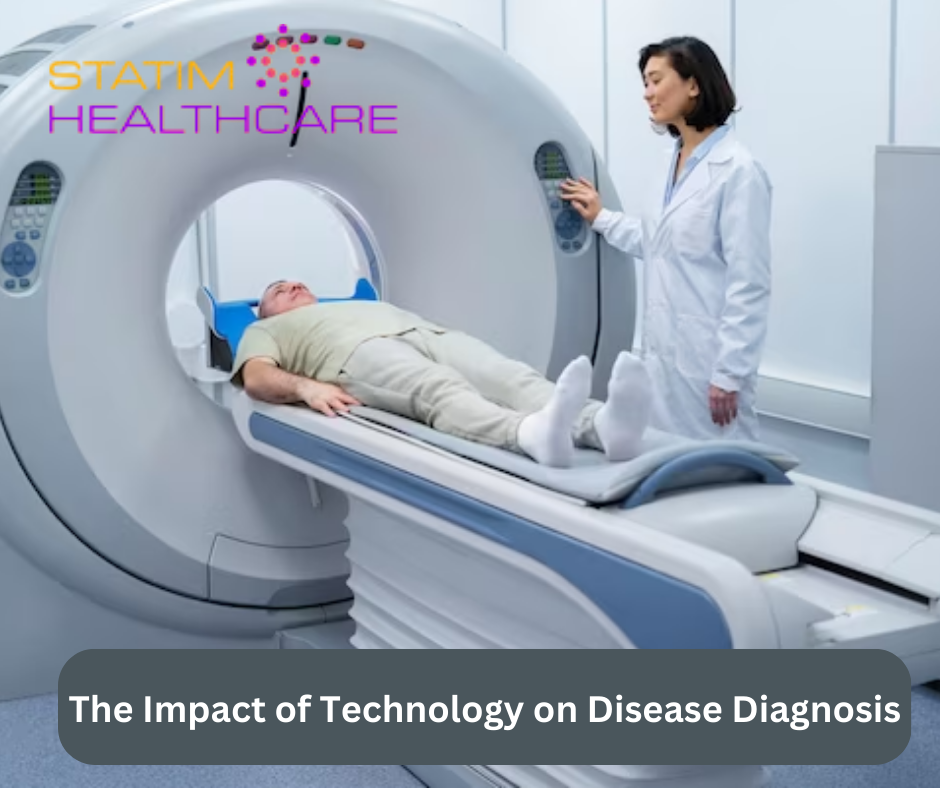Disease diagnosis plays a crucial role in healthcare as it enables timely treatment and better patient outcomes. In recent years, technology has revolutionized the disease diagnosis field, transforming how healthcare providers approach diagnostic processes. From traditional methods to advanced medical diagnostic imaging solutions, we’ll explore the profound impact of technology on disease diagnosis and highlight the role of health informatics companies in this domain.
Traditional methods of disease diagnosis have long been the cornerstone of medical practice. However, these methods often come with limitations and challenges. Accuracy and efficiency have been areas of improvement, urging the need for advancements in diagnostic technology.
The Emergence of Technology in Disease Diagnosis
Advancements in technology have paved the way for a new era in disease diagnosis. With the introduction of medical diagnostic imaging and innovative diagnostic image services in USA, healthcare providers can now obtain detailed insights into the human body. Imaging systems for medical diagnostics have become invaluable tools, enabling the visualization of internal structures, detection of abnormalities, and accurate diagnoses.
Key Technological Innovations in Disease Diagnosis
- Imaging and Radiology Advancements
Medical imaging and diagnostics have witnessed significant advancements, empowering healthcare professionals with detailed and high-quality images of the body. Integrating medical imaging and diagnostics has revolutionized how diseases are detected and monitored. Cutting-edge technologies such as MRI, CT scans, and ultrasound have enhanced diagnostic accuracy and precision.
- Laboratory Diagnostic Tools
Laboratory diagnostic tools have also benefited from technological advancements. These tools provide healthcare providers with invaluable information about a patient’s health, facilitating the identification of diseases and monitoring of treatment efficacy. Automated laboratory systems and rapid diagnostic tests have streamlined the diagnostic process, enabling faster results and improved patient care.
- Point-of-Care Testing Devices
Point-of-care testing devices have revolutionized disease diagnosis by bringing diagnostic capabilities closer to the patient. These portable devices allow for immediate testing and analysis, eliminating the need for samples to be sent to a laboratory. Point-of-care testing devices have proven to be especially useful in resource-limited settings and emergencies, providing rapid and accurate results for immediate decision-making.
The Role of Health Informatics Companies
Among the key players driving advancements in technology-driven imaging systems for medical diagnostics is Statim Healthcare, a renowned health informatics company. With its expertise in providing knowledge-based solutions to hospitals and diagnostic centers worldwide, Statim Healthcare has been at the forefront of transforming the field of disease diagnosis.
- Radiology Reporting Services
Statim Healthcare offers comprehensive radiology reporting services, ensuring accurate and timely interpretations of imaging systems for medical diagnostics. Through the utilization of advanced software and expert radiologists, they provide detailed reports that assist healthcare providers in making informed treatment decisions.
- Teleradiology Services
Statim Healthcare’s teleradiology services enable remote access to diagnostic images, facilitating collaboration among healthcare professionals across different locations. With their secure and efficient telecommunication infrastructure, healthcare providers can easily consult radiologists and obtain expert opinions on challenging cases, improving patient care outcomes.
Benefits of Technology in Disease Diagnosis
Integrating technology in disease diagnosis offers several benefits that positively impact patient care and outcomes.
- Improved Accuracy and Speed
Technological advancements have significantly improved the accuracy and speed of disease diagnosis. Medical imaging systems provide detailed images, enabling healthcare providers to detect even the smallest abnormalities. Rapid access to diagnostic results allows for timely intervention and treatment planning, enhancing patient outcomes.
- Enhanced Patient Outcomes and Treatment Planning
Accurate disease diagnosis leads to better patient outcomes and more effective treatment planning. With advanced technology, healthcare providers can identify diseases at early stages when they are more treatable. This early detection allows for timely interventions and tailored treatment plans that can significantly improve patient outcomes and increase the chances of successful recovery.
- Reduced Healthcare Costs
Using technology in disease diagnosis can also contribute to cost reduction in healthcare. Medical resources can be allocated more efficiently by streamlining diagnostic processes, minimizing the need for invasive procedures, and avoiding unnecessary tests. This not only lowers healthcare costs but also improves resource utilization, making healthcare services more accessible and affordable for patients.
- Data-Driven Decision Making
Technology-driven disease diagnosis generates a wealth of data that can be utilized for informed decision-making. Through medical imaging and diagnostics data analysis, healthcare providers can gain valuable insights into disease patterns, treatment effectiveness, and population health trends. This data-driven approach enables evidence-based decision-making, improving healthcare strategies and better patient outcomes.
The Future of Technology in Disease Diagnosis
The impact of technology on disease diagnosis is continually evolving, with exciting possibilities for the future. Artificial intelligence (AI) and machine learning advancements hold immense potential for enhancing diagnostic accuracy and efficiency. AI algorithms can analyze vast amounts of patient data, detect subtle patterns, and assist healthcare providers in making accurate diagnoses. Furthermore, telemedicine and remote patient monitoring technologies are expanding access to diagnostic services, particularly in underserved areas, improving healthcare equity and patient outcomes.
Conclusion
Technology has revolutionized the field of disease diagnosis, offering healthcare providers powerful tools to detect, monitor, and treat diseases with greater accuracy and efficiency. Diagnostic imaging, diagnostic image services in USA, imaging systems for medical diagnostics, and medical imaging and diagnostics have all played pivotal roles in advancing disease diagnosis. We, at Statim Healthcare, have been instrumental in driving these technological advancements and providing knowledge-based solutions to healthcare facilities worldwide. With technology continuously evolving, the future of disease diagnosis holds immense promise for improved patient outcomes and more effective healthcare delivery. Embracing and harnessing the power of technology in disease diagnosis will undoubtedly shape the future of healthcare for the better.

